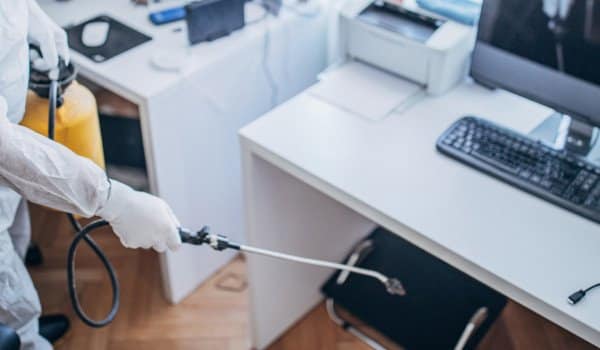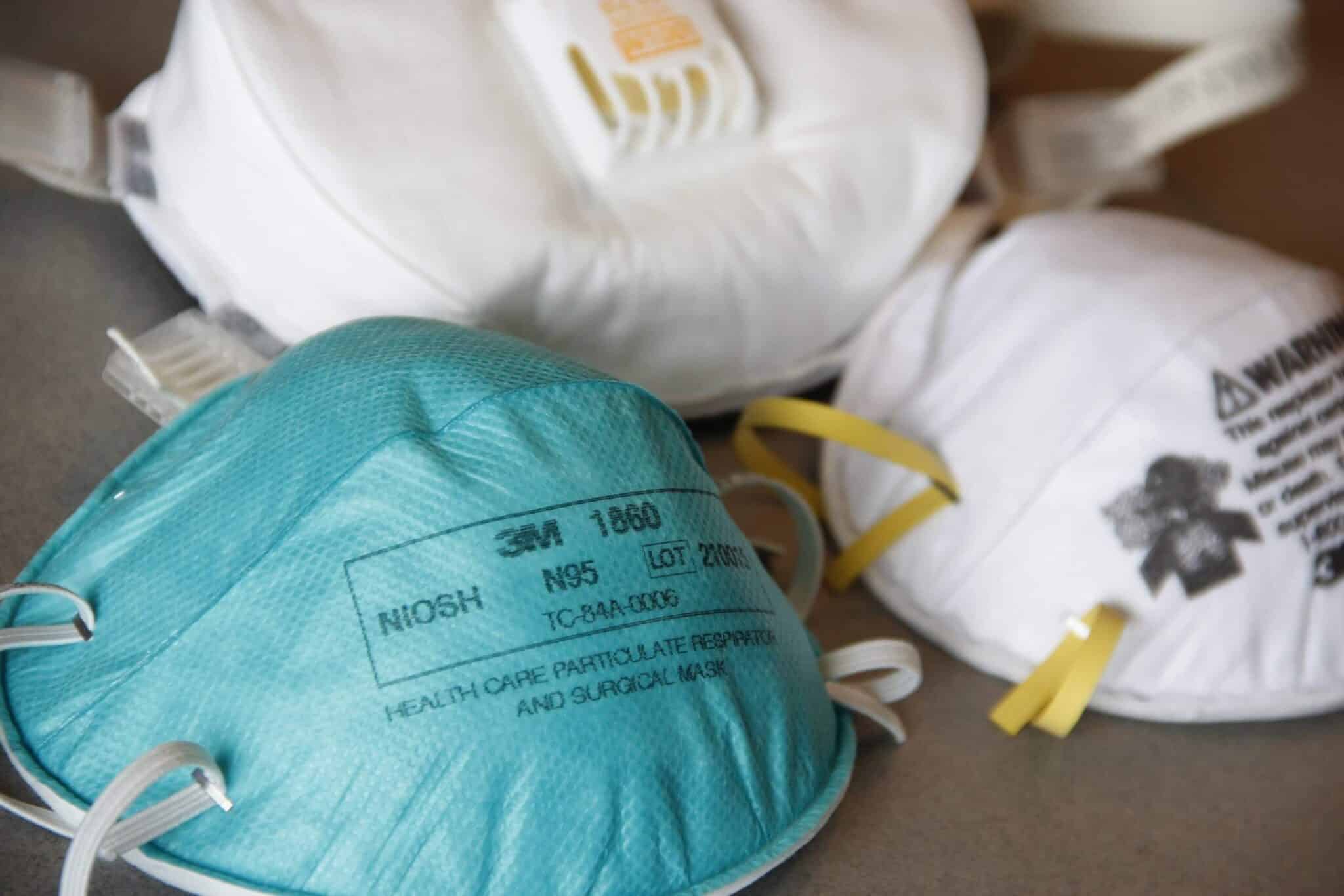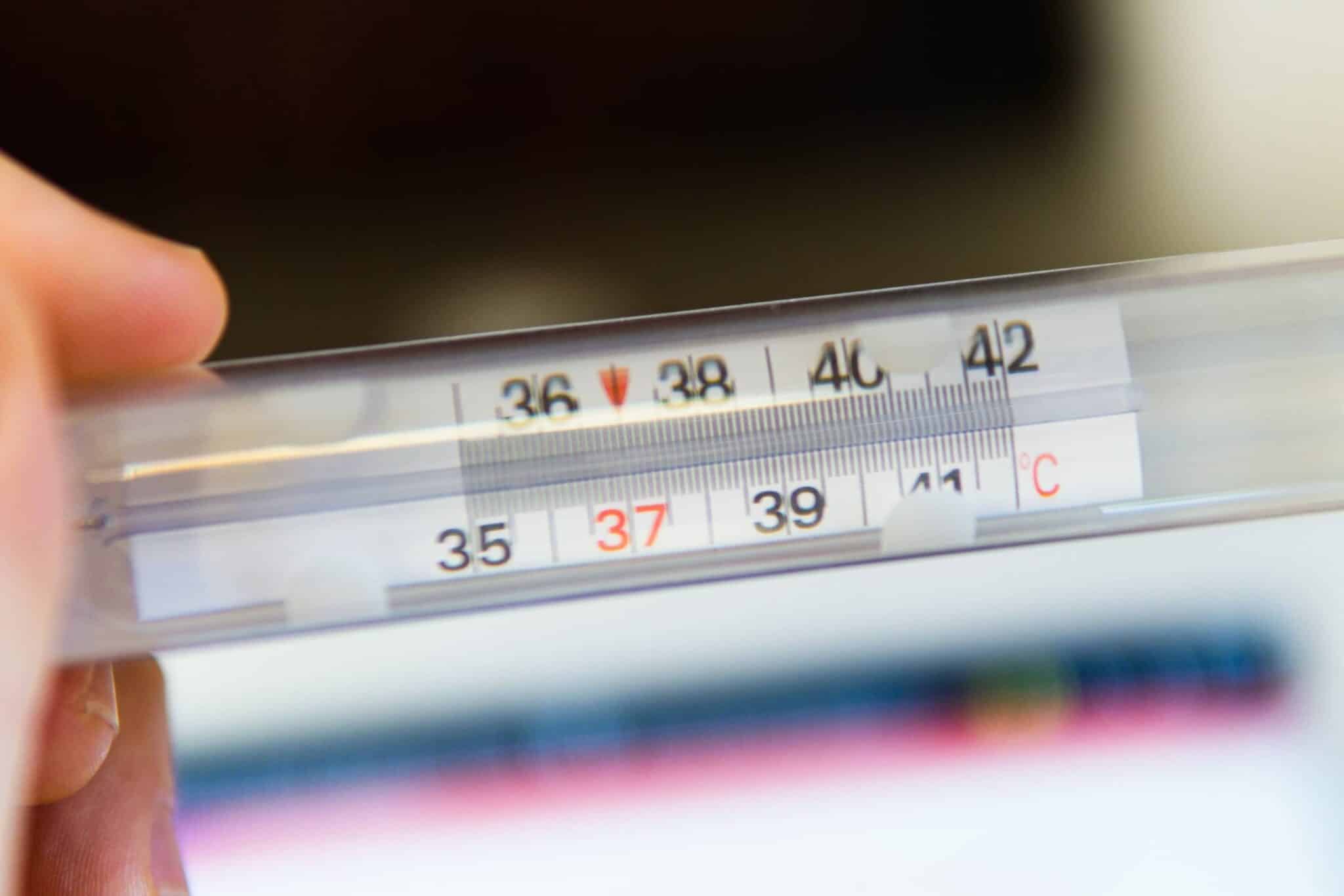
As countries around the world discuss how to reopen safely, companies are planning for employees to return to the office over the coming weeks.
While many companies may feel prepared, there are two main priorities to ensure this transition is as safe as possible: maintaining consistent and thorough cleaning procedures—which we’re covering in this article—and implementing social distancing policies. We’ll go into more detail regarding how to enforce safe social distancing in a follow-up post.
How can facility managers (FMs) help implement changes in the workplace to support these top priorities?
In this article, we’re discussing several ways FMs can prepare the office to mitigate the spread of COVID-19 when employees make the shift back to the workplace.
A facility manager’s role in making the workplace safe
Facility managers are in a unique position to help make the move back into the workplace as safe as possible for all employees. Creating a safe and healthy environment involves a blend of technology and health policies that will require full participation and diligence from every member of the organization.
To make your transition plan a success, FMs and company leaders will not only need total compliance from employees, but FMs will need to monitor how these tactics are performing and be prepared to make any adjustments as necessary.
Even though different companies may start to phase employees back into the office at different times, it’s best to have a plan ready now. That way, when your company does allow people back, you’re not scrambling to create a safe space.
Let’s discuss a few ways FMs can prepare for the return to the workplace.
Roll out sanitizing stations
Continuous cleaning will be one of the most effective tactics a company can implement to stop the spread of COVID-19 in the office. Because handwashing is one of the most impactful ways to stop the virus from spreading, it’s all the more important to impose a company-wide policy.
Set up touchless sanitizing stations throughout the office, especially in places like the bathrooms, at doors, and other high-traffic areas. A good rule of thumb is that if an employee touches a door handle, tap, or anything else, there must be an accessible sanitizing station nearby to curve the spread of COVID-19. While these stations should include hand sanitizer, a graphic that explains safe and effective handwashing techniques, and additional important information regarding employee health could also be added.
By making it easy for employees to sanitize, they’re more likely to comply. However, make it a point from the start to enforce strict handwashing policies and that those who fail to comply will face repercussions.
Before employees transition back into the office, they can orient themselves to these changes and locate sanitizing stations ahead of coming into the office with a tool like Visual Directory®. That way, they don’t have to stress about where the nearest station is in relation to their desk or workspace.

Implement a new cleaning policy
In addition to sanitizing stations, implementing a cleaning policy will be one of the most impactful ways to create a safe and healthy office environment for all.
A consistent, thorough cleaning process is vital. But what might that look like in the workplace?
- Create and enforce a cleaning schedule and keep a visible log that employees can see, which tracks when surfaces and areas were last cleaned
- Hold recurrent “cleaning hours” where all employees receive a notification to stop their current task and clean their space, wash their hands, and check to make sure their personal protective equipment (PPE) is still fitting correctly
- Designate lockers (that will be cleaned daily) where employees must store their belongings to limit personal belongings through work areas and at workstations to keep any potential spread contained to one area
- A cleaning log that keeps track of when areas and surfaces were last cleaned will not only help ensure spaces are clean, but it will help put employees at ease knowing that spaces are sanitized on a schedule
Enforce a daily safety procedure
Limiting the risk of the virus starts with limiting the exposure to others. Implementing a safety protocol for employees to follow upon arriving at work can help slow the spread of the coronavirus.
This could involve taking every employee’s temperature before they enter the building and requiring that they drop their personal items in a sanitized locker before heading into the office to sanitize their hands. Be sure to employ a structure to this; don’t assume every employee will follow suit.
A few ways to ensure employees follow this protocol each day may include:
- Have a “greeter” wearing PPE at different entrances of the building to answer questions (e.g., “Why can’t I bring my purse into the office?”), provide reassurance when people arrive at the office, alleviate concerns, and explain the protocol in more detail
- Position people at different entrances of the building prepared to take employee’s temperatures
- Create signage that clearly states where locker areas for personal effects are located and how to store belongings properly
- Instruct employees to wash their hands and secure their PPE before entering the office
Depending on your company, this protocol may vary, but the sentiment is the same: Make it clear what you want employees to do and put the right structures in place to guarantee it gets done correctly.
Enforce a PPE policy
To help slow or prevent the spread of COVID-19, implementing a PPE policy while in the office could be lifesaving. According to the Centers for Disease Control and Prevention, “CDC is additionally advising the use of simple cloth face coverings to slow the spread of the virus and help people who may have the virus and do not know it from transmitting it to others.”
Whether you’re in a meeting or working alone at your desk, wearing your PPE could have a profound impact on slowing the spread of COVID-19 in the workplace. Require employees to wear masks or face shields and gloves at all times while in the office.
If you’re part of a large organization, create an employee PPE registry system that helps you confirm all employees have access to proper PPE. If an employee doesn’t have the appropriate PPE, this database can help you ensure you can get them what they need.

Leverage sensor technology to reinforce safety measures
Sensors have proven to be quite a powerful tool in the workplace in terms of collecting occupational and usage data for FM teams.
But how else can they be used to help mitigate the risk of COVID-19?
You can place sensors on doors and other surfaces to allow for motion-detection opening, so employees don’t have to touch them. In addition to cleaning these surfaces regularly, minimizing the need to touch them can help mitigate the spread of the virus.
Proximity sensors can notify employees when they are too close to one another. This initiative could make some uneasy at first, but if it means reducing the spread of COVID-19, it may be something to consider for a period. Proximity sensors made by Samsung are currently undergoing testing in Ford plants in the form of wrist bands for employees to wear. If employees get within two meters of each other, the wrist band will buzz.
Sensor technology used to determine desk availability can also help FMs and company leaders see how many employees are currently at the office or working at their desks. This can help them decide whether they should allow more employees to come into the office or if they need to send anyone home to work remotely.
Impose regular health and wellness checks
In addition to temperature-taking and regular handwashing, create resources for employees who want to get a better understanding of their current health.
This could entail:
- Asking for temperature checks outside of regularly scheduled checks
- The ability to go home or work from home if they suspect they aren’t feeling well or if they’ve been exposed to the virus
- Access to mental health resources, like a therapist or counselor
- Regular company-wide meetings to discuss how the transition back into the office is going for them, what could be improved, what concerns they have, etc.
Making these resources available to employees not only can help stop the spread of COVID-19 in the workplace, but it can make employees feel safer at work.
But what happens if someone reports a high temperature or displays symptoms of COVID-19 while in the office? FMs must have a quarantine area set up beforehand and isolate those who show symptoms or have a high temperature as quickly as possible from the rest of the team.
Additionally, FMs need to collaborate with the human resources department to create communication policies that inform others of potential exposure. Keep in mind that HIPPA is at play here, so be cautious when handling this issue.

Configure the HVAC system to minimize the spread of the virus
Another way to reduce the spread of the virus is to leverage your HVAC and BAS systems. But it’s vital to be cautious with this initiative as it could have an inverse effect if not handled with care.
To optimize your HVAC and BAS systems, consider the following:
- Air ventilation: Increase outdoor air ventilation with a lower population in the building as this increases the adequate dilution ventilation per person, in addition to numerous other changes
- Run systems for longer: Keep systems running longer hours to support proper ventilation
- Purify the building’s air: Consider portable room air cleaners with HEPA filters to minimize the risk of viral particles from circulating the building
- Monitor the building’s temperature: Make sure the building is at an optimal temperature that can slow the growth of the virus but that keeps employees comfortable.
Optimizing your HVAC and BAS systems to maintain clean air standards and safe temperatures can filter the virus and prevent it from spreading throughout the office.
Proper planning can slow the virus and make employees feel safe
Employees may be nervous about returning to work—and rightly so. But FMs can help reduce that anxiety while also mitigating the spread of the virus using a variety of tactics. It’s best to err on the safe side, especially in the beginning, to make sure you keep employees healthy and out of risk.
At the very least, impose sanitizing stations and a regular cleaning schedule as well as PPE and social distancing practices. Implementing health and safety measures can be lifesaving as we all work towards transitioning back into the office.
As your team transitions back into the office, be sure to maintain clear communication that includes frequent updates to the entire organization. Keeping all employees aware of what’s happening is not only an essential part of a successful move back into the office, but it will help keep everyone as safe and healthy as possible.
Comment below or send us a tweet to let us know how you’re going about this process with your team.
Photo Credits: Andrea Piacquadio, Matthew Henry, CDC, Matteo Fusco



